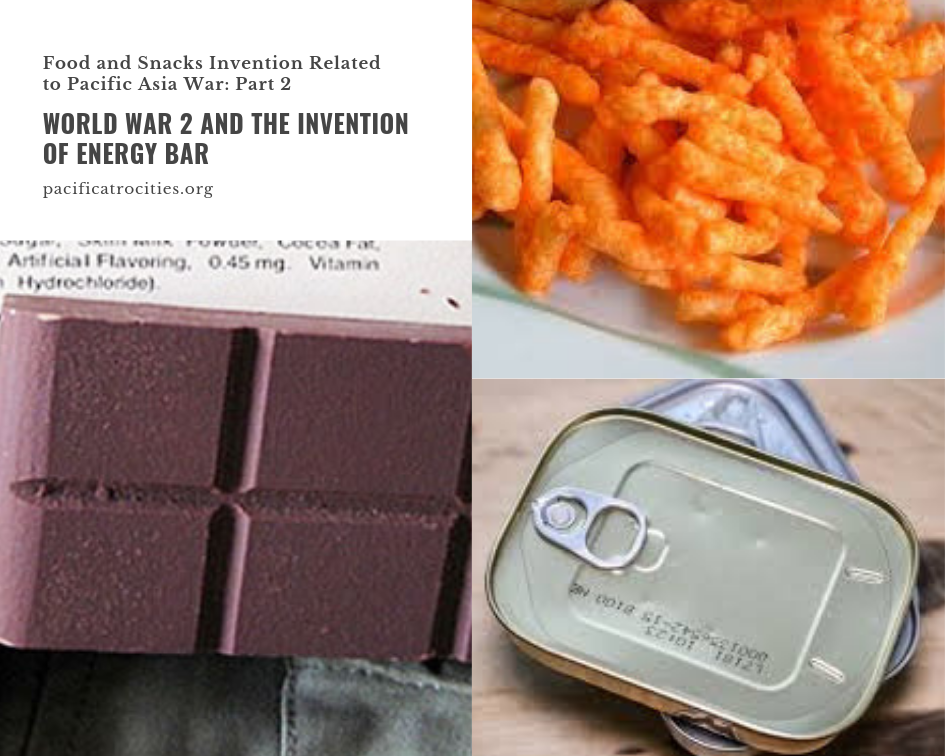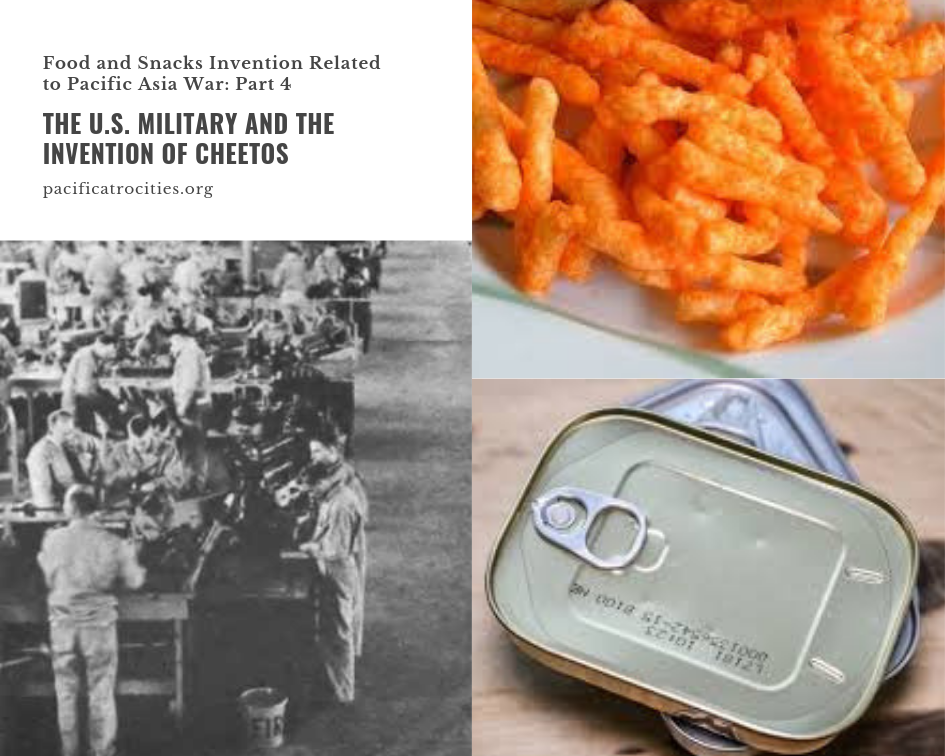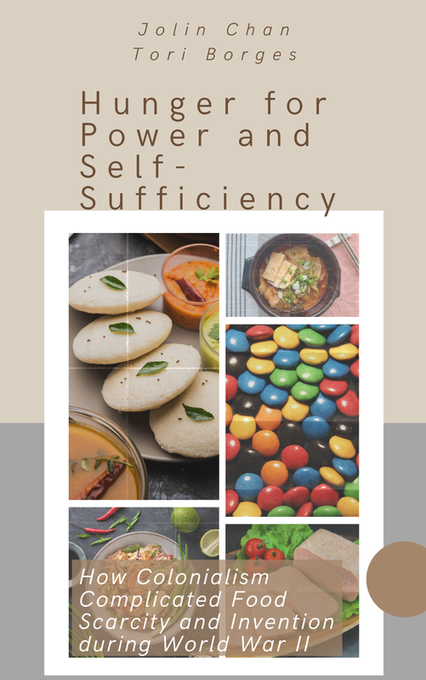|
Ever had a time where you feel as if you had no time for a meal but still needed something to keep you going and went for an energy bar? This sweet tasting energy bar likely filled with cereal and chocolate energy bar date itself back to World War 2. The United States military feeds its members through rations, which are often made for quick distribution, preparation, and eating in the fields. Ration had evolved through the ages. During the Revolutionary War to the Spanish-American War, the “garrison ration” consisted of meat or salt fish, bread, and vegetable. Then during World World 1, it evolved into three types of rations: Trench ration, the Iron ration, and Reserve ration. The Trench ration is exactly what it sounds like. As the soldiers were fighting the war in trenches and some food was getting spoiled by poisoned gas in the front line, canned food had to be used to prevent food being poisoned. The Iron Ration consisted of a 3 ounces cake, chocolate, and an lb of salt and pepper packets. The Reserve ration consisted of an lb of canned meat or 12 oz of fresh bacon, biscuits, pre-ground coffee, sugar, salt, and cigarettes. With the change and adaptation of how nations fought wars, rations had to adapt as well. In 1937, Captain Paul Logan demanded a meal to be indestructible, pocket-sized, heat-resistant, and nutritious for the paratroopers during their long field deployment. The bar also had to not be too tasty as he did not want his soldiers snacking on them. He met with Hershey’s in the spring of 1937. William Murrie, the president of Hershey’s chocolate and Sam Hinkle, the Chief Chemist of Hershey’s, went into an experiment to make an energy bar that would meet the nutrition needs of the US soldier. After Milton Hershey’s approval of the military project, the technologists of Hershey’s came up with “Field Ration D” bars made out of oat flour, cacao fat, skim milk powder, sugar, and artificial flavoring. By 1939, Hershey was able to produce 100,000 units of “Field Ration D” bars per day, but the military had complained about the taste of the bar. Due to what it does to some soldiers’ bowel movements, it even had a nickname of “Hitler’s secret weapon”. Since it was resistant to heat and cannot melt in soldiers' mouths, it was also known to do some real damage to the soldiers’ teeth. Of course, Ration D bars were only reserved for emergencies as the military had other options. These are some of the ration options by the time it got to World War 2: A-ration, Garrison Ration, which is fresh, refrigerated, or frozen food prepared in dining halls or field kitchens. B-ratio, Field Ration, which is canned, packaged, or preserved foods normally prepared in field kitchens without refrigeration. C-ration, Individual Ration, which is a complete pre-cooked, ready to eat, canned individual meal. D-Ration, Emergency Ration, revolutionized by the Iron Ration in World War 1, but with the addition of Captain Paul Logan’s request of making its heat resistance and bad tasting energy bars. K-Ration, Individual Ration, which is designed as a short duration individual ration for paratroopers and other specialized light infantry ration, and it was declared obsolete by 1948 due to its lack of nutrition. Compared to the other rations of A-C, D-ration bars were the nastiest of the options. The military’s complaints about the taste eventually led Hershey’s to develop a better tasting bar named Hershey’s Tropical Chocolate Bar in 1943, which was a bit tastier. It was only a slight improvement to the original “Field Ration D” bar. Once the United States became involved in World War 2, the demand for the energy bar had gone up. The estimated bars produced between 1940-1945 was over 3 billion. Eventually, due to the demand of the bars, other companies started producing them as well. Today, the heat resistance technology used to produce these bars are in demand to produce chocolates in India and other tropical climate areas to produce melt resistant candies. Energy bars are also now more popular than before. Of course, energy bars produced for the mass population taste a lot better than the bars produced for the war. There are also different bars targetted for different markets and for different types of needs ranging from meal replacement to organic bars marketed for different activities and needs. References:
Related ArticlesRead and Learn More!
0 Comments
Leave a Reply. |
- Home
- Stories
-
Internship
- Summer 2024 Internship
- Summer 2023 Internship
- Fall 2022 Internship
- Summer 2022 Internship
- Summer 2021 Internship
- Fall 2020- Spring 2021 Internship
- Summer 2020 Internship
- Fall 2019 Internship
- Summer 2019 Internship >
- School Year 2018-2019 Internship
- Summer 2018 Internship >
- Fall 2017 Internship
- Summer 2017 Internship >
- Books
- Archives
-
Resource Page
-
Supplementary Research Guides
>
- Unit 731 - Guide >
-
Philippines' Resistance - Guide
>
- Philippines World War II Timeline
- The Japanese Invasion & Conquest of the Philippines
- Bataan Death March
- Formation of Underground Philippines Resistance
- Supplies of the Guerrilla Fighters
- The Hukbalahap
- Hunter's ROTC
- Marking's Guerrillas
- United States Army Forces in the Philippines of Northern Luzon (USAFIP-NL)
- The Aetas
- Chinese and Filipino-Chinese Nationalist Guerrilla Units
- The Female Faces of the Philippine Guerrillas
- Rising Sun Flag - Guide >
- Pinay Guerrilleras - Guide >
- Fall of Singapore - Guide >
- Three Years and Eight Months - Guide >
- Siamese Sovereignty - Guide >
- The Khabarovsk War Crimes Trial - Guide >
- Unit 731 Cover-up : The Operation Paperclip of the East - Guide >
- Marutas of Unit 731 - Guide >
- Prince Konoe Memoir - Guide >
- Competing Empires in Burma - Guide >
- Battle of Shanghai - Guide >
- Ishi Shiro - Guide >
- Taiwan The Israel of the East - Guide >
- Seeking Justice for Biological Warfare Victims of Unit 731 - Guide >
- Rice and Revolution - Guide >
- Clash of Empires - Guide >
-
Hunger for Power and Self-SufficiencyI - Guide
>
- The Influence of War Rations on Post-War Culinary Transformations
- How World War II Complicated Food Scarcity and Invention
- American Military Innovations
- Government-Sponsored Food Inventions in Europe during World War II
- Feeding the Army: The Adaptation of Japanese Military Cuisine and Its Impact on the Philippines
- Mixed Dishes: Culinary Innovations Driven by Necessity and Food Scarcity
-
Denial A Quick Look of History of Comfort Women and Present Days’ Complication - Guide
>
- The Comfort Women System and the Fight for Recognition
- The Role of Activism and International Pressure
- The Controversy over Japanese History Textbooks
- The Sonyŏsang Statue and the Symbolism of Public Memorials
- Activism and Support from Japanese Citizens
- The Future of Comfort Women Memorials and Education
- Echoes of Empire: The Power of Japanese Propaganda - Guide >
- Lesson Plans >
-
Supplementary Research Guides
>
|
Pacific Atrocities Education
730 Commercial Street San Francisco, CA 94108 415-988-9889 |
Copyright © 2021 Pacific Atrocities Education.
We are a registered 501 (c)(3) charity. |
- Home
- Stories
-
Internship
- Summer 2024 Internship
- Summer 2023 Internship
- Fall 2022 Internship
- Summer 2022 Internship
- Summer 2021 Internship
- Fall 2020- Spring 2021 Internship
- Summer 2020 Internship
- Fall 2019 Internship
- Summer 2019 Internship >
- School Year 2018-2019 Internship
- Summer 2018 Internship >
- Fall 2017 Internship
- Summer 2017 Internship >
- Books
- Archives
-
Resource Page
-
Supplementary Research Guides
>
- Unit 731 - Guide >
-
Philippines' Resistance - Guide
>
- Philippines World War II Timeline
- The Japanese Invasion & Conquest of the Philippines
- Bataan Death March
- Formation of Underground Philippines Resistance
- Supplies of the Guerrilla Fighters
- The Hukbalahap
- Hunter's ROTC
- Marking's Guerrillas
- United States Army Forces in the Philippines of Northern Luzon (USAFIP-NL)
- The Aetas
- Chinese and Filipino-Chinese Nationalist Guerrilla Units
- The Female Faces of the Philippine Guerrillas
- Rising Sun Flag - Guide >
- Pinay Guerrilleras - Guide >
- Fall of Singapore - Guide >
- Three Years and Eight Months - Guide >
- Siamese Sovereignty - Guide >
- The Khabarovsk War Crimes Trial - Guide >
- Unit 731 Cover-up : The Operation Paperclip of the East - Guide >
- Marutas of Unit 731 - Guide >
- Prince Konoe Memoir - Guide >
- Competing Empires in Burma - Guide >
- Battle of Shanghai - Guide >
- Ishi Shiro - Guide >
- Taiwan The Israel of the East - Guide >
- Seeking Justice for Biological Warfare Victims of Unit 731 - Guide >
- Rice and Revolution - Guide >
- Clash of Empires - Guide >
-
Hunger for Power and Self-SufficiencyI - Guide
>
- The Influence of War Rations on Post-War Culinary Transformations
- How World War II Complicated Food Scarcity and Invention
- American Military Innovations
- Government-Sponsored Food Inventions in Europe during World War II
- Feeding the Army: The Adaptation of Japanese Military Cuisine and Its Impact on the Philippines
- Mixed Dishes: Culinary Innovations Driven by Necessity and Food Scarcity
-
Denial A Quick Look of History of Comfort Women and Present Days’ Complication - Guide
>
- The Comfort Women System and the Fight for Recognition
- The Role of Activism and International Pressure
- The Controversy over Japanese History Textbooks
- The Sonyŏsang Statue and the Symbolism of Public Memorials
- Activism and Support from Japanese Citizens
- The Future of Comfort Women Memorials and Education
- Echoes of Empire: The Power of Japanese Propaganda - Guide >
- Lesson Plans >
-
Supplementary Research Guides
>




